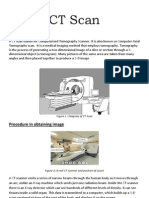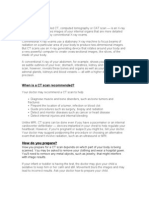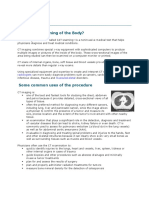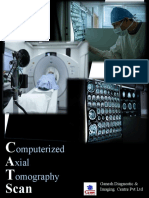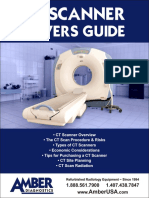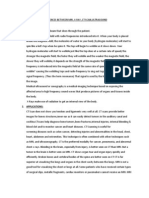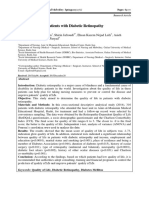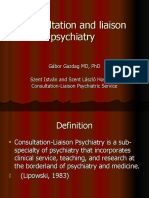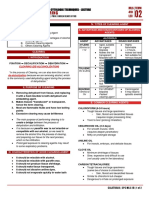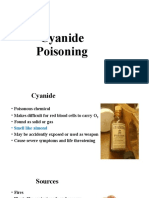0% found this document useful (0 votes)
12 views3 pagesXray CTscan Notes
X-rays are quick imaging techniques that produce 2D images of the body, primarily bones, while CT scans provide detailed 3D images by combining multiple X-ray measurements. CT scans are superior for visualizing soft tissues and detecting conditions that X-rays may miss, but they involve higher radiation and cost. Both imaging methods have risks, including radiation exposure, and precautions are necessary, especially for pregnant women.
Uploaded by
carlovalentim04Copyright
© © All Rights Reserved
We take content rights seriously. If you suspect this is your content, claim it here.
Available Formats
Download as PDF, TXT or read online on Scribd
0% found this document useful (0 votes)
12 views3 pagesXray CTscan Notes
X-rays are quick imaging techniques that produce 2D images of the body, primarily bones, while CT scans provide detailed 3D images by combining multiple X-ray measurements. CT scans are superior for visualizing soft tissues and detecting conditions that X-rays may miss, but they involve higher radiation and cost. Both imaging methods have risks, including radiation exposure, and precautions are necessary, especially for pregnant women.
Uploaded by
carlovalentim04Copyright
© © All Rights Reserved
We take content rights seriously. If you suspect this is your content, claim it here.
Available Formats
Download as PDF, TXT or read online on Scribd
/ 3

